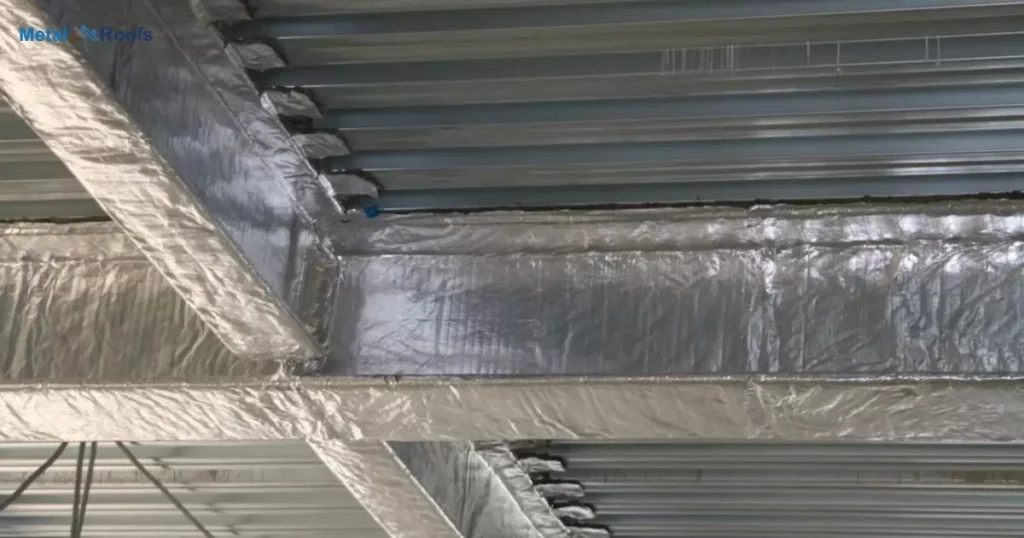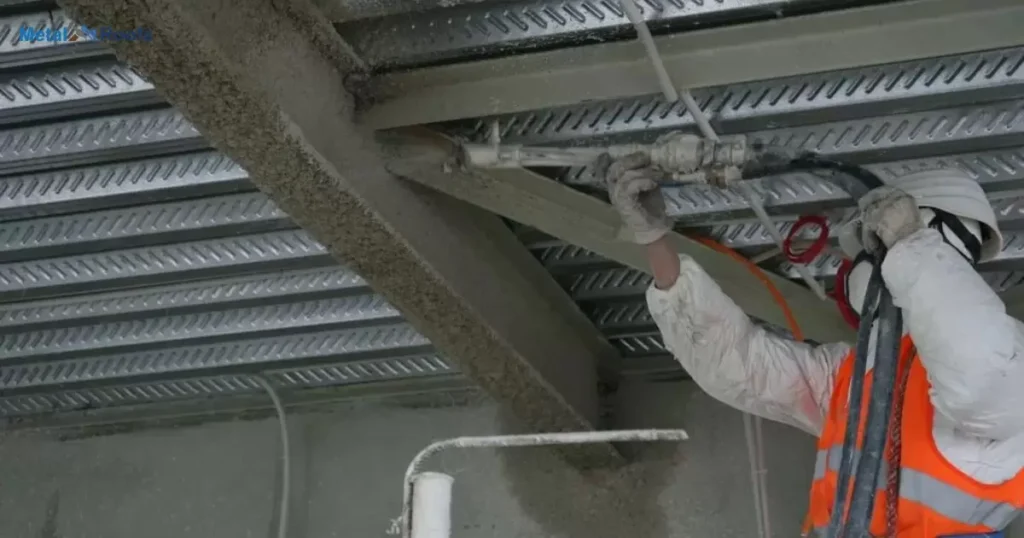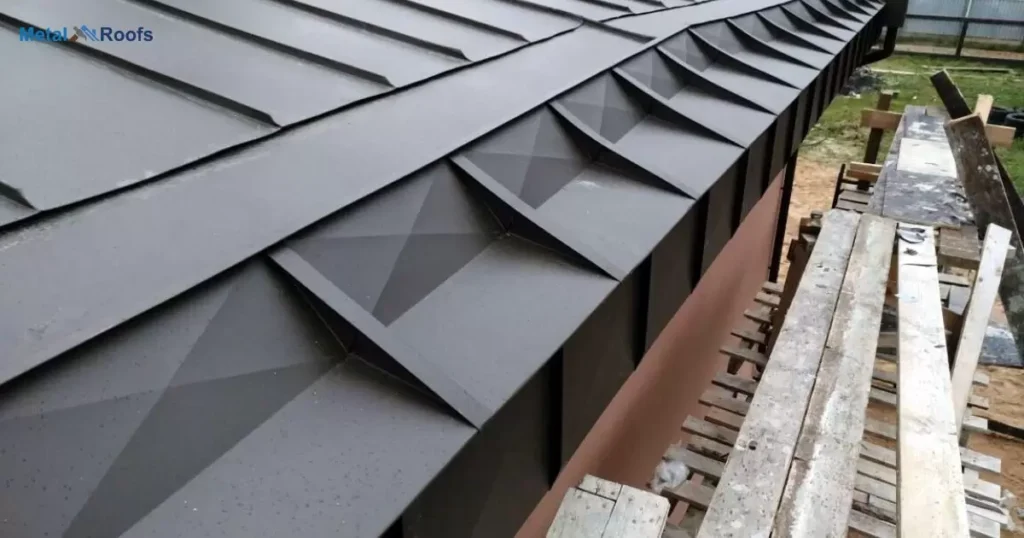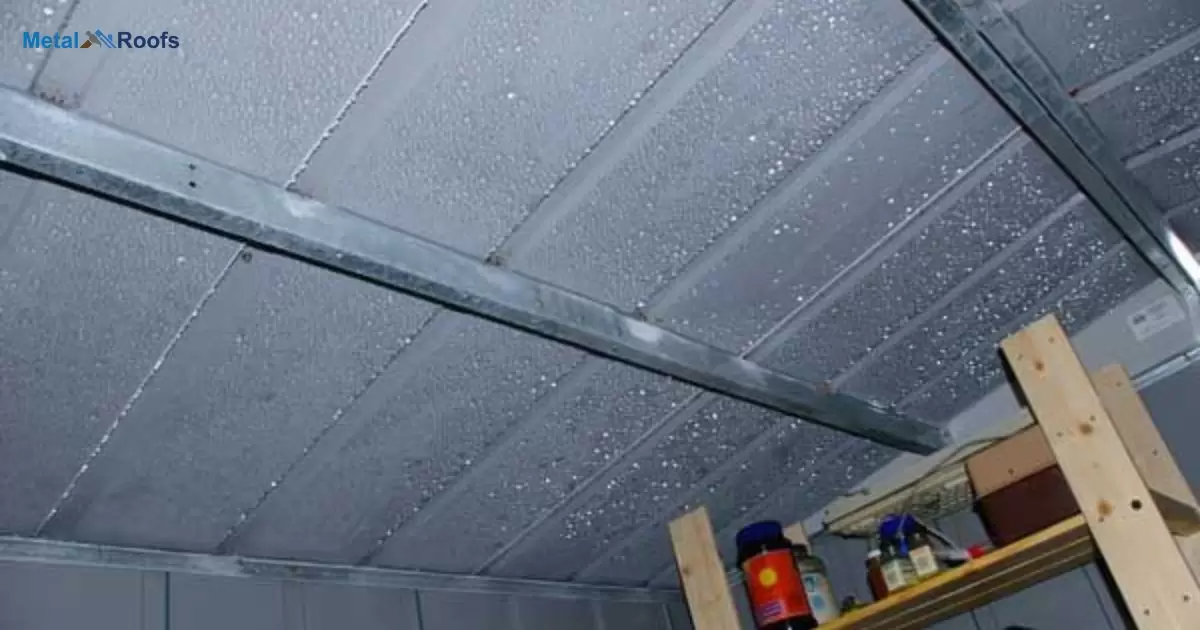Metal roofs get moisture condensation. Condensation ruins metal roof insides. Install proper attic ventilation systems. Improve attic insulation thickness. Use vapor barrier under roof deck. Consider dehumidifier for attic space. Prevent rain entry into attic area. Monitor attic humidity levels closely.
Curious about how to stop condensation on a metal roof? Look no further by implementing effective insulation techniques and ensuring proper ventilation, you can tackle this issue head-on. Say goodbye to moisture buildup and hello to a dry, comfortable space with these straightforward solutions.
Dealing with condensation on a metal roof can be frustrating, but it’s not an insurmountable challenge. When you install a corrugated metal roof, taking proactive measures like improving insulation and ventilation can effectively minimize moisture buildup.
Key Takeaways
- Ensure proper airflow.
- Reduce temperature differences.
- Install a vapor barrier.
- Close gaps and cracks.
- Control interior moisture.
- Add a drip edge.
Anti Condensation Paint
Anti condensation paint helps combat moisture buildup on metal roofs. It forms a protective barrier that prevents water from collecting and causing condensation. Applying this paint reduces the likelihood of mold and mildew growth while prolonging the life of the roof.
Choose a high-quality anti condensation paint suitable for metal surfaces. Ensure proper surface preparation before application for best results. With regular maintenance and the use of anti condensation paint, you can effectively minimize condensation issues and maintain the integrity of your metal roof for years to come.
Paint To Stop Condensation On Metal Roof
| Type of Paint | Description |
| Latex Paint | Water-based, easy application, quick drying. |
| Acrylic Paint | Durable, weather-resistant, good adhesion. |
To stop condensation on a metal roof, consider using paint. Start by ensuring proper ventilation in the space beneath the roof. Insulate to reduce temperature differences. Apply a vapor barrier to prevent moisture infiltration. Seal any gaps and cracks to keep warm, moist air out.
Consider using dehumidifiers to control interior moisture levels. Add a drip edge to channel water away from the roof edge. Apply a reflective coating to reduce heat absorption during the day. Regular maintenance is essential to keep the roof and its components in good condition.
Metal Roof Condensation

Condensation on metal roofs can be a hassle. Ventilation is key it helps control temperature and humidity. Insulate the space underneath; it evens out temperature differences. Seal any gaps and cracks; it stops warm air from seeping in.
To prevent moisture buildup, use dehumidifiers indoors. Add a drip edge along the eaves; it channels water away. Apply a reflective coating; it reduces heat absorption. Regular maintenance is crucial it keeps your roof in good shape.
Condensation Reducing Paint
If condensation on your metal roof is a persistent issue, consider using condensation reducing paint. This special paint helps to minimize moisture buildup by creating a barrier on the surface of the roof. Apply it after ensuring proper ventilation and insulation for best results.
Condensation reducing paint works by sealing the metal surface, preventing warm air from coming into direct contact with the cold roof. This barrier reduces the likelihood of condensation forming, keeping your roof and interior space drier. It’s a simple yet effective solution to tackle condensation problems and maintain a comfortable environment inside your building.
Water Dripping From Metal Roof
When water drips from a metal roof, it’s often due to condensation. To tackle this issue, start by ensuring good ventilation. Proper airflow helps balance temperatures and reduces moisture buildup. Insulating the space beneath the roof can also minimize temperature differences, cutting down on condensation.
Sealing gaps and cracks is another effective strategy. By preventing warm, moist air from entering, you can curb condensation. Installing a vapor barrier helps keep moisture out of the building. Regular maintenance, including adding a drip edge and applying a reflective coating, further prevents water drips and maintains the roof’s integrity.
Preventing Condensation On Metal Roofs

To prevent condensation on metal roofs, start by ensuring proper ventilation. Good airflow helps regulate temperature and humidity levels inside. Insulate the space beneath the roof to reduce temperature differences, keeping warmth in during winter and out during summer.
Install a vapor barrier to stop moisture from entering and condensing on the roof. Next, seal any gaps or cracks where warm, moist air might sneak in. This prevents condensation by keeping the interior air separate from the cold metal surface. Consider using dehumidifiers to control moisture levels indoors.
Condensation Prevention Tips
Condensation can be a nuisance, leading to mold, mildew, and damage to your home. Here are some tips to help prevent condensation:
Control Humidity: Keep indoor humidity levels between 30-50% relative humidity. You can use a dehumidifier to reduce moisture in the air.
Ventilation: Proper ventilation is key. Use exhaust fans in bathrooms, kitchens, and laundry rooms to expel moist air outside. Make sure your attic and crawl spaces are well ventilated.
Use Fans: Circulating air helps to reduce condensation. Ceiling fans and portable fans can help distribute air throughout your home.
Insulate: Proper insulation helps prevent warm, moist air from coming into contact with cold surfaces, reducing the likelihood of condensation. Pay special attention to areas like attics, basements, and crawl spaces.
Seal Leaks: Seal any leaks around windows, doors, and other openings to prevent warm air from entering and condensing on cooler surfaces.
Storm Windows: Installing storm windows can help to reduce condensation by creating an additional barrier between the warm indoor air and the cold outdoor air.
Use a Moisture Barrier: If you have a particularly damp area, consider using a moisture barrier such as plastic sheeting or vapor barriers to prevent moisture from seeping through walls and floors.
Keep Temperature Consistent: Try to keep the temperature consistent throughout your home. Fluctuating temperatures can lead to condensation as warm air meets cooler surfaces.
Dry Wet Surfaces: If you notice any condensation forming on surfaces like windowsills or walls, be sure to wipe them dry promptly to prevent mold and mildew growth.
Check HVAC System: Make sure your heating, ventilation, and air conditioning (HVAC) system is in good working condition. Regular maintenance can help ensure it’s operating efficiently and reducing excess moisture in the air.
By following these tips, you can help prevent condensation and maintain a healthier indoor environment.
Professional Assistance For Condensation Issues
When dealing with condensation problems on a metal roof, seeking professional assistance can be crucial. Ventilation experts can evaluate airflow and suggest improvements, while insulation specialists can help minimize temperature differences. They may recommend installing a vapor barrier to prevent moisture infiltration and sealing any gaps or cracks.
Professionals can advise on using dehumidifiers to control interior moisture levels and adding a drip edge to channel water away from the roof edge. Applying a reflective coating can also be suggested to reduce heat absorption during the day.
Additional Considerations For Metal Roofs

When dealing with metal roofs, there are some additional factors to keep in mind. First off, regular maintenance is crucial to prevent issues. Clean the roof and gutters often to avoid debris buildup. Secondly, think about the climate in your area. Different regions have different challenges.
For example, if you’re in a hot climate, consider using a reflective coating to reduce heat absorption. In colder climates, proper insulation is key to prevent condensation. By considering these factors, you can ensure your metal roof remains in top condition for years to come.
Frequently Asked Questions
What Can You Spray On Metal To Stop Condensation?
Spray a specialized coating designed for metal roofs to create a moisture-repellent barrier and prevent condensation.
How Do You Stop Condensation From Forming On Metal?
To prevent condensation on metal, improve ventilation, insulate, seal gaps, use dehumidifiers, install a drip edge, apply a reflective coating, and maintain regularly.
How Do I Stop Condensation Under My Roof?
Improve ventilation and insulation, seal gaps, and use dehumidifiers to prevent condensation under your roof.
Conclusion
By implementing these strategies, you can effectively minimize or eliminate condensation on your metal roof, improving comfort and protecting the integrity of your building. Ensure proper airflow and insulation, seal gaps, and use dehumidifiers to maintain optimal conditions.
Regular maintenance is crucial to sustaining these efforts and preventing future issues. With these steps, you can enjoy a dry and comfortable living environment under your roof.











